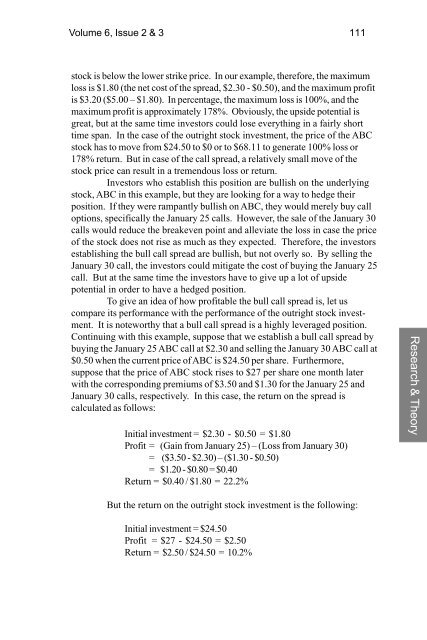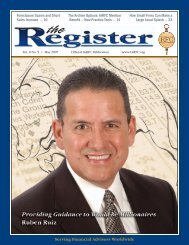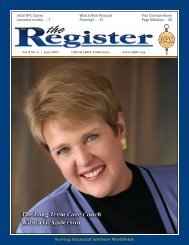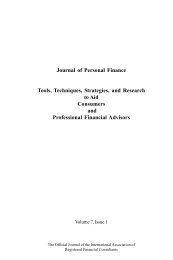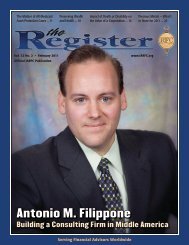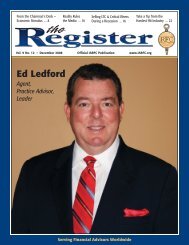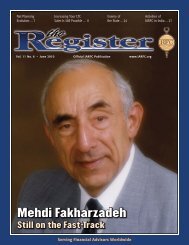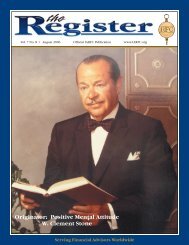3433-vol. 6 issue 2-3.pmd - iarfc
3433-vol. 6 issue 2-3.pmd - iarfc
3433-vol. 6 issue 2-3.pmd - iarfc
Create successful ePaper yourself
Turn your PDF publications into a flip-book with our unique Google optimized e-Paper software.
Volume 6, Issue 2 & 3 111<br />
stock is below the lower strike price. In our example, therefore, the maximum<br />
loss is $1.80 (the net cost of the spread, $2.30 - $0.50), and the maximum profit<br />
is $3.20 ($5.00 – $1.80). In percentage, the maximum loss is 100%, and the<br />
maximum profit is approximately 178%. Obviously, the upside potential is<br />
great, but at the same time investors could lose everything in a fairly short<br />
time span. In the case of the outright stock investment, the price of the ABC<br />
stock has to move from $24.50 to $0 or to $68.11 to generate 100% loss or<br />
178% return. But in case of the call spread, a relatively small move of the<br />
stock price can result in a tremendous loss or return.<br />
Investors who establish this position are bullish on the underlying<br />
stock, ABC in this example, but they are looking for a way to hedge their<br />
position. If they were rampantly bullish on ABC, they would merely buy call<br />
options, specifically the January 25 calls. However, the sale of the January 30<br />
calls would reduce the breakeven point and alleviate the loss in case the price<br />
of the stock does not rise as much as they expected. Therefore, the investors<br />
establishing the bull call spread are bullish, but not overly so. By selling the<br />
January 30 call, the investors could mitigate the cost of buying the January 25<br />
call. But at the same time the investors have to give up a lot of upside<br />
potential in order to have a hedged position.<br />
To give an idea of how profitable the bull call spread is, let us<br />
compare its performance with the performance of the outright stock investment.<br />
It is noteworthy that a bull call spread is a highly leveraged position.<br />
Continuing with this example, suppose that we establish a bull call spread by<br />
buying the January 25 ABC call at $2.30 and selling the January 30 ABC call at<br />
$0.50 when the current price of ABC is $24.50 per share. Furthermore,<br />
suppose that the price of ABC stock rises to $27 per share one month later<br />
with the corresponding premiums of $3.50 and $1.30 for the January 25 and<br />
January 30 calls, respectively. In this case, the return on the spread is<br />
calculated as follows:<br />
Initial investment = $2.30 - $0.50 = $1.80<br />
Profit = (Gain from January 25) – (Loss from January 30)<br />
= ($3.50 - $2.30) – ($1.30 - $0.50)<br />
= $1.20 - $0.80 = $0.40<br />
Return = $0.40 / $1.80 = 22.2%<br />
Research & Theory<br />
But the return on the outright stock investment is the following:<br />
Initial investment = $24.50<br />
Profit = $27 - $24.50 = $2.50<br />
Return = $2.50 / $24.50 = 10.2%


